#central subject of the Bible
Explore tagged Tumblr posts
Text
#david x jonathan#Bible fandom#?#lol#I’m so sorry to all 2 religious blogs that follow me#specifically if heresylog sees this#00#I swear this is actually important to my independent dissertation#I need to know how ppl perceive David and how it parallels to the relationship with Achilles and Patroculus#dxj#DON’T READ THIS IF YOU HAVENT VOTED#bc if David is the hero and younger than Jonathan then he’s an equivalent to Achilles#(and a twink)#therefore a bottom#right?#but twink top IS also compelling…#there’s also the power imbalance of Prince and subject that is reversed in the Achilles and Patroclus formula#prince bottom IS also compelling…#NOT to mention there is missing Jonathan tradition where he is more the central hero#and David’s role is the later propoganda glaze over top of the story#the person you think is the hero actually being the sidekick IS also compelling#I think I like the David as top version… but I must hear the people’s opinion first
198 notes
·
View notes
Text
4 Minutes and the Cinematography of Nipples
I said before that I thought 4 Minutes was pretty instantaneously the best looking BL on the market for 2024 after one episode. Which, not gonna lie, is a pretty big fucking claim. There’s been a lot of BL that’s come out that’s looked good, and I do think there’s been a steady improvement overall in the market in the last few years. Personally I think Japanese and Korean BL have a stronger production quality over a majority of Thai BL but like, if that’s a hot take I guess I prefer my food spicy.
The point being~ if I’m gonna make such a hyperbolic statement, well I better back it up right?
So I’m gonna break down a few scenes from the first episode, what I liked about them, why they worked for me, and why on a technical level I think 4 Minutes has just got it going on.
For better readability you can also check out this essay here.
Sidenote: my google docs kept trying to autocorrect “Bible” to “the Bible” and idk how to teach google I mean the hot Thai actor and not the book of Jesus.
To start, I’m going to break down this scene featuring Great and his nepo baby cat:
I thought starting with this scene would be good because it’s such a low-key scene and honestly making these simplistic scenes visually interesting is very difficult! But if you have the basics down, the foundations of cinematography and film making, these simpler scenes can be really memorable.
Like yeah we’re all gonna remember this scene because shirtless Bible and oh my god Akira!? - I have only recently learned who Akira is; why is this cat getting a bigger bag than me? - but beyond that, what makes it cool to watch? What makes it interesting? What information does it showcase to the audience?
One thing I added to the video was a grid for the rule of thirds.
Rule of thirds is a shot composition technique applied to both film and photography. It’s the grid you see if you film a homevideo and helps a Director and Cinematographer figure out where to place the subject or subjects of the shot. The idea is the gridlines show you where you “should” place the subject(s) of said shot.
Like everything, the rule of thirds is a guideline in filmmaking, not a hard and fast unbreakable rule. Filmmakers like Wes Anderson like to play more with central composition shots, rather than ROT.
Anyway on to the opening shot, right after our credits and we’re moving into the shot.
To start, the first thing I notice is the scene’s color grading. Color grading in film is the manipulation of raw film footage to create specific color tones throughout a project. Sometimes this grading is more pointed and obvious, think The Matrix, while in other films it’s not as obvious but still very prominent, think Killers of the Flower Moon.

It’s not that the before credits scene looks entirely, jarringly different from the opening scene, but the hospital scene is surrounded by whites and blue tones, it’s darker, and only a single source of light exists. It gives the entire scene a much more frantic, uneasy aesthetic but it’s not so far off from the darker muted tones of the next scene that it feels jarring or out of place.
The second big thing I noticed in the episode is the use of aspect ratio. I’m not 100% sure what aspect ratio the production used exactly, but the use of widescreen as opposed to full screen in my opinion, gives the episode a more cinematic feel to it in comparison to other Thai BLs.
Example, if you look at Century of Love (2024) it appears to be filmed in the standard full screen - which I believe is 16:9? - while 4 Minutes is widescreen (thus the black bars at the top and bottom). Widescreen can give a show a more “movie like” quality to it which is part of the vibes I get from 4 Minutes.

(source)
Onto Great’s actual introduction scene.
We’re not starting the shot with static movement, but with a camera panning right. I’ve talked about camera panning and such in BL before and it’s something I’ve found doesn’t happen as often as it should. Which is a shame! It’s such a simple technique but it adds so much.
Imagine if we entered the frame with a static center shot, and then a cut to Great sleeping and turning off his alarm clock, and then another cut to above the bed. Think about how much more boring that could be visually.
Instead, we enter the scene with movement, panning over and creating some interesting visual framing.

So here’s our opening shot, do you notice anything interesting? To start, what I like about this shot other than the panning movement in, is that we don’t see Great’s face yet. In fact we don’t see his face in full until about 30 seconds into the scene. This builds anticipation, yeah we all know what Bible looks like, but for the audience who doesn’t this helps build anticipation.
Who is this character? What does he look like? What’s his deal?
It also engages the audience more, if you notice part of the composition of the shot has Great in the mid-ground slightly blurred out, while the foreground emphasizes the things on his desk. He’s distant from us, the audience, sleeping off his hangover not yet ready to “join” the world yet.
Here’s another two more things I like about this shot:

Lines.
Using lines and shapes can make a scene more visually interesting and invoke different feelings to the viewer. In this shot, I get a sense of symmetry, the camera panning right, lightly drags across the screen alongside the lines below and above Great, almost creating a frame within a frame effect. As if Great is boxed into a clock in and of itself.

You can also see the use of balance in the scene as well, connecting back to that visual theme of symmetry as well as blocking our view of Great’s face. The lava lamb and champagne bottle are almost the same height, which helps create balance in the shot. The champagne bottle informs us Great has been drinking or does drink since it’s positioned so close to his bed, whilst also continuing to hide his face away from the viewer.
I also like that the lava lamp is a bright spot of color. The tone of the scene is mostly muted greens, and gray, but the bright orange lava lamp and even the pink champagne bottle draw our attention but don’t overwhelm us either. It provides the scene with some warmth but doesn’t offset the overall tone of the color grading.
And then, the last bit of this shot:

We have Great knocking over the champagne bottom, and turning off his alarm clock. Notice that the alarm clock and the champagne bottle hit those ROT dots almost exactly. There’s also the use of lines by the length of Great’s arm - I just forgot to add a line I’m a failure, a fake, fml - we see him knock over the bottle, and then we follow the line of his arm directly to the alarm clock which is also a shape, a circle.
I like that they used a clock with a specific notable shape, since by the end of this scene the clock is relevant to the story as a whole. Using a shape makes the clock more visually noticeable and memorable to the audience.
So in the next cut we’re above Great - just like Great’s gonna be above Tyme, fuckin hell I’m corny - in a medium-full shot and there’s a couple things I really like here.
I really like the use of lines here with the bed going in one direction but Great’s body going another. It’s disconcerting, and off kilter a bit.
The use of patterns plus the opposing symmetry, whereas in the previous shot the lava lamp and champagne bottle were providing balance, here one side of the bed is patterned, while the other isn’t. This creates a sense of imbalance and makes the shot more visually interesting.
This medium-full shot at a high angle makes Great smaller, and continues to showcase his dishevelment, keeping him distant from the world itself. Also notice the lack of color here as well.
What could this say about Great as a character? Or his story?

So this next cut is the one that actually inspired me to write this essay to begin with and know what I’ma eat some crow here. I originally said it was a great ROT shot but I was wrooooooong. It’s definitely a center composition shot.

Notice as well, the bed itself is its own shape - rectangle - center in the frame, and yet the shot almost looks unbalanced again because of that singular patterned rug. It’s the only pattern in the entire shot, not even Great’s pillows have noticeable patterns on them.
The above view camera angle in a full shot creates almost an omnipresent feel, as if the audience - or something else? - were looking down upon Great. Whose face we still haven’t seen! It makes him smaller, less powerful, and almost vulnerable. Shots like this are often used in horror films like James Wan’s Malignant (2021) where the horror spector will be looking down above the would-be victim.
Another thing I like about this scene though is we have Great moving. It would be simpler and easier to have his phone just by his alarm clock, or under his pillow, but think about how much more visually interesting it is that he has to move down the bed and reach for his phone. It creates action in an actionless low stakes scene.
And now, 30 whole seconds in and we’ve finally seen Great’s face!

Fun fact, with the ROT grid the gridlines fall right across Bible’s nipples. That’s not a film analysis, just something I noticed entirely intentionally. Thanks Madam Director Ning Bhanbhassa Dhubthien.
The actual shot is in center composition again, as Great rolls over and reveals his face the camera begins to zoom in.
This creates movement in the scene instead of leaving the camera to statically observe it’s now, finally, inviting the audience to meet Great. Pulling us in towards him whereas before we were kept at a distance. Great’s awake and, well as ready to meet the world as somebody with a raging hangover can be.
I also like how Bible is moving constantly in this scene; he rubs his eyes and nose, he twitches his fingers, titles his head back and forth, etc it’s nothing revolutionary but it’s appreciated.
When the scene cuts, we get this shot:

I didn’t put the red dot on his nipple, it just landed there. This is all Madam Director Ning chepie.
But you can see how Great’s body is landing on all those gridlines pretty solidly. Also in the background we see his alarm clock again, a bright blurred circle in the distance. I also like the angle of this shot, as it creates depth in the frame, with Great’s head being in the foreground his lower body in the mid-ground and the background blurred out.
What follows is Akira appearing in frame. Which was really difficult to capture so I don’t have a screenshot. But what I really like is Akira entering the frame out of focus. They could have just cut to Akira, but instead they opted for Akira to enter the frame which is more interesting.

When we do cut, Akira is firmly on one of those dots so we don’t miss them in the frame. I think it’s also interesting that we’ve pulled out again, into a mid-full shot, hanging above Great, and we see that clear symmetry line again between the patterned rug and the regular carpet.
I also really love that when we got to Great sweet-talking Akira and feeding them we’re not just doing a cut, we’re panning downwards which continues to add movement to the scene. And we get that moneyed sponsor shot!

Durex can’t pay for everything okay?
So in the final bit of this scene we get focus on Great, who’s in focus, before he gets up and leaves the frame where the camera then focuses on the clock behind him.


See how in the first frame the background is all blurred out, but once Great walks out of the frame - again, great that he walks out, movement!! Y’all don’t understand how boring 1000 Stars was for me to watch because of the lack of this stuff okay? - and then the focus shifts to the clock. Which is round.
God I know that sounds so dumb, but imagine the clock without that ring light bit on it, it’s just a tiny little rectangle. Not as fun or interesting to look at right? Or as noticeable especially from a distance?
This shift in focus also tells us “this is important” whatever “this” is. The subject of the shot goes from Great to the alarm clock but they are positioned as equally important. We’re meant to pay attention to this seemingly innocuous item, which we learn later in the episode is time. We’re meant to remember and note that time will be important to the story - I know with a title like 4 Minutes you’d fucking hope time would be important but have y’all ever read Youtube comments? It’s rough out there for visual comprehension okay?
So all in all this scene is only 1 minute and 40 seconds give or take. It’s very short, but I don’t think it was boring at all. I think it’s a really solid introduction to a main character. Think, Korn didn’t get this much time to showcase his introduction, his scene is shorter - though also well done - which showcases which character is more of a story priority.
This scene eases the audience into the story, inviting us to wake up into the world like Great is. It uses techniques like lines, shapes, symmetry, color and focus to make what could be a very boring scene into an interesting one.
There’s so so much I probably and certainly missed, I’m far from an expert, but I hope I was able to articulate what I liked about this scene, and why I think it looks good.
Stay tuned for more if I can manage to focus long enough to breakdown more scenes lol
Also red dots on Bible’s nipples are just funny to me it be what it be.
Further Reading:
Composition in Cinematography / THE LAST OF US
Center-Framing vs Chaos-Cinema: Mad Max vs Transformers
Camera Framing: Shot Composition & Cinematography Techniques Explained [The Shot List, Ep 2]
The Ultimate Guide to Camera Shots (50+ Types of Shots and Angles in Film)
Color Grading 101 - Everything You Need to Know
Mixing Film And Digital Footage: Killers Of The Flower Moon
In Praise of Subtle Cinematography
#4 minutes#4 minutes the series#bible sumettikul#4minutes#jesbib#chaos pikachu speaks#pikachu's bl film series
258 notes
·
View notes
Text
"Evil Takes Root": The Temptation and Fall of Galadriel
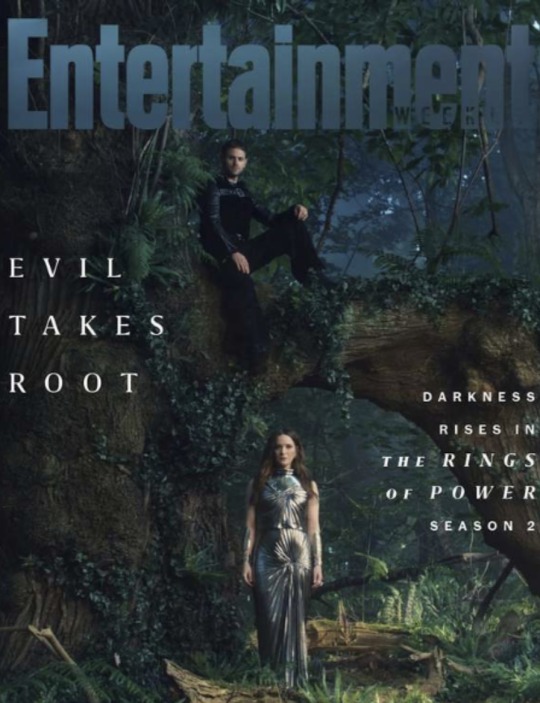


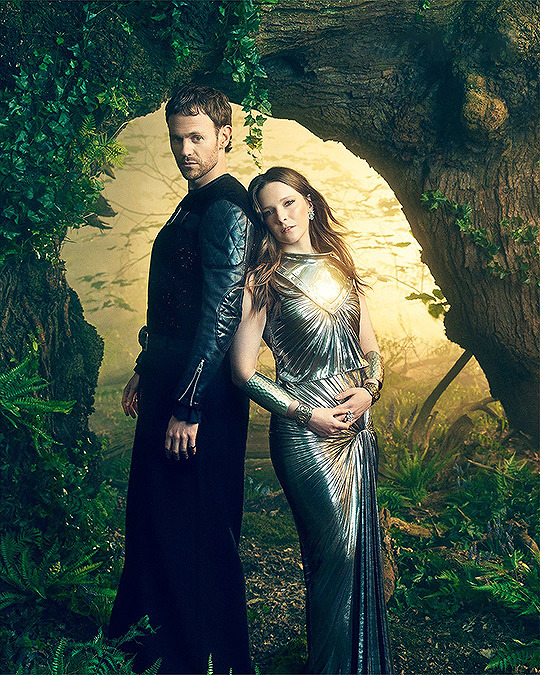
How many Christian references do you want in Sauron and Galadriel’s scene in 2x08? Yes! Because this is Tolkien, and Christian-Catholic message is the core of his legendarium.
“The Original sin” (or “The Fall") is central to Tolkien world-building: “The dislocation of sex-instinct is one of the chief symptoms of the Fall [of Adam and Eve]” (Tolkien Letter 43). Lust is the “original sin”, and the gateway to sin, and from where all other sins originate.
St. Paul writes "cupiditas radix malorum": “the root of all evil is cupidity". “Cupidity” is greedy and lustful desire. This is motivated by the fact that Eve ate the forbidden fruit because "she saw it, was beautiful". This explains why Christians have such a bad view of sex, especially when it’s not restrained by marriage.
There is lust for the forbidden fruit (the fruit from the tree of knowledge of good and evil that Adam and Eve were instructed not to eat in the Garden of Eden). This is when “sin” is first introduced into the world, leading to their banishment from paradise. The themes here are: disobedience to God, and succumbing to temptation (evil).
And it’s the serpent that inflames Eve's lust, and "Rings of Power" wasn't even being subtle here (even the OST for this scene is called "The Fall of Galadriel"):

youtube
“Lust”, in its biblical/catholic sense, is the misuse of the body, sexually. The opposite of “lust” is “temperance” and “chastity”. “Lust” is disorderly sexual desire, and the subordinated enjoyment of sexual pleasure (against God’s law). It’s not just promiscuity, but extra-marital sex, as well.

In the Bible, “lust” is thematized by adultery (because marriage is a sacred sacrament, and acting against it, it’s breaking God’s laws, hence being a “deadly sin”). We also see this sin in connection with “idolatry” (one of Sauron’s crimes in Tolkien lore), when characters (such as Solomon) take foreign wives, symbolizing the forsaking of one’s partner for another.

Freudian symbolism: a crown (clitorical symbol) penetrating a sword (phallic symbol). That’s symbolic penetrative sex for you.


I’m not saying they are symbolically f*cking here, but they probably are.
And this serpent has a name, and a history of its own: his name is Samael (“poison of God”), the accuser or adversary, the seducer; and he’s mentioned in the Old Testament of the Bible, connected to Jewish tradition and early Christianity. Described as handsome and angelic, he’s one of the several angels who rebelled against God, and descend upon Earth to fornicate with women. He’s the prince of all demons, and a sorcerer. In the Jewish Kabbalah, he’s known as the “great serpent” who coils around creation and injects his venom into it. He’s associated with fire, and represents the Dark side of the Sun.
The devil is endlessly ingenious, and sex is his favorite subject. He is as good every bit at catching you through generous romantic or tender motives, as through baser or more animal ones. Tolkien Letter 43
Samael is associated with the Garden of Eden, and with Original sin myth; because he’s the planter of the tree (or vine) of knowledge, the one with the forbidden fruit Eve will eventually eat.

Are they not the seeds you planted?
He has a bride: Lilith: a raven-haired demon cursed by her sin of rebelliousness. She’s Adam’s first wife, who rebels against him and against God, and flees from the Garden of Eden. She’s known for her dark, uncontrollable and dangerous sexuality; she’s the mother of demons. God tries to get her back, but she has slept with Samael already. With him, she creates a host of demon children.


Now you know the meaning of the wine on *that* peak. And there you have it, folks: the queer couple of “Rings of Power” is Sauron and Adar, and this should surprise no one, really. Adar was obviously the spiteful ex-lover on a personal vendetta, and the show even went with the “bury your gays” trope with him. And Sauron is the queerest character to ever queer, so there’s that.







What this Uruk right here is saying is that he ate the “forbidden fruit”, too. Because he “saw it, it was beautiful”.
Back to Samael and the Garden of Eden; in some versions he’s the serpent itself, while in others he rides the serpent. Either way, he’s involved. He tempts Eve into eating the forbidden fruit, the original sin, lust. In one text, Samael actually had sex with Eve and impregnated her; he’s the father of Cain. God eventually castrated Samael to prevent him from filling the world with his demonic offspring.
Both of these demons are connected to another: Asmodeus (“wrath-demon”). The demon of lust (“original sin”), the king of demons, the prince of pleasures, the patron of passions, and the lord of luxury. He’s the Devil’s wingman, who’s known as a trickster, a shapeshifter, and a seducer who deceives people, causing them to stray from God’s path. He whispers into peoples’ ears, and inflames their passions and desires. He’s connected to power, seduction and testing of wills. While Lilith seduces men; Asmodeus seduces women. He’s known for being beautiful, charming and for his engaging nature.
In Lurianic Kabbalah, these three demons - Lilith, Samael, and Asmodeus - are connected, and interact with each other, in cooperation, to create a powerful force of evil to challenge God and humanity.
Which means, it’s possible to draw inspiration from these myths to create one single character. Which explains why Sauron has elements of both Samael (although I would argue this is more Morgoth coded), Asmodeus, and even Lilith when he was at Morgoth’s side and seduced Adar. Right now he’s on his “Asmodeus era”, so he seduces and wants women (Mirdania and Galadriel).

Evil takes root: Full-on penetration, followed by ejaculation (blood binding; the crown ejaculates Sauron’s blood into Galadriel’s chest).
But Eve wanted to eat the forbidden fruit. She wanted to bite into it, it was consensual. She was tempted, and she succumbed to temptation, to lust. Like Adar drank the red wine Sauron gave him. He drank it all.
So whatever is happening here is meant to be seen as consensual. No idea why they decided to make it look so brutal, then. However, and playing the Devil’s advocate here; why would Galadriel surrender her chest for stabbing, in the first place? Which leads me to next religious reference at play in this scene:
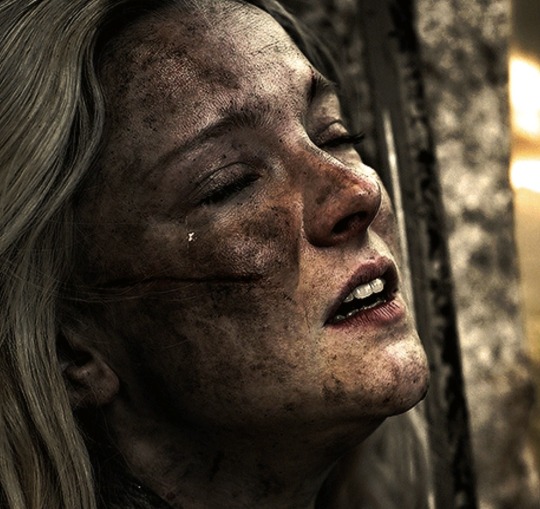
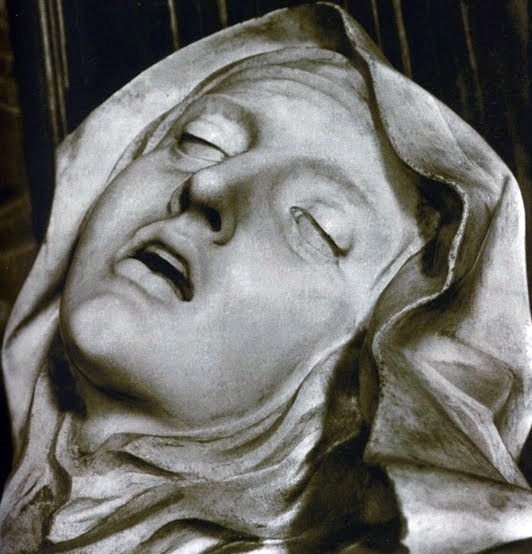
“Rings of Power” also went all the way with the The Ecstasy of Saint Teresa/Galadriel reference, by having her orgasm after getting stabbed in the chest by the spear of an angel of fire.
And Galadriel "ate the forbidden fruit", too. And she's about to join Sauron/the serpent.

But she snaps out of it (via Nenya), and jumps off the cliff. But it's too late, because evil already took root:


#rings of power#the rings of power#Galadriel trop#Galadriel rings of power#Sauron rings of power#Sauron rop#Adar#Galadriel rop#Sauron trop#saurondriel#sauron x galadriel#Adar the rings of power#Adar RoP#Adar trop#galadriel x sauron#haladriel#sauron x adar
126 notes
·
View notes
Text
Itoshi Rin Profile from Egoist Bible Vol.2 (2024)
"I'll defeat Itoshi Sae and carve my name into the world. This is my story!"

Team: Bluelock Eleven
Position: Central Forward (CF)
Weapons: Kicking accuracy, technique, tactical vision, physical ability.
Birthdate: September 9th.
Age: 16 (First year high school)
Zodiac sign: Virgo.
Birthplace: Kanagawa Prefecture (Kamakura City)
Family structure: Father, mother, older brother, himself.
Height: 186 cm.
Foot size: 27.5 cm.
Blood type: A.
Dominant foot: Right.
Favorite soccer player: David Beckham. "I respect his kicks."
Age started playing soccer: For as long as I can remember. "I grew up watching my big brother play."
Motto: “The field is a battlefield”, “Tepid” (habit)
Strengths: I can play soccer. “Anything else doesn’t matter.”
Weaknesses: Unfriendly. “If you don’t like it then don’t bother me.”
Favorite food: Ochazuke. “Especially sea bream chazuke.”
Disliked food: Vinegared dish. “I don’t like sour things.”
Best rice accompaniment: Tuna. “Soy sauce and wasabi combo is the winner. No objection.”
Hobbies: Getting the chills from horror games and horror movies.
Favorite season: Autumn. “I like it when it’s a bit chilly.”
Favorite music: King Gnu in general. “Especially Prayer X.”
Favorite movie: Horror movie in general. “Especially The Shining.”
Favorite manga: Dragon Head and Ciguatera.
Character color: Turquoise Blue.
Favorite animal: Owl. “I’m fascinated by them. I think it’s the eyes.”
Best subjects: Physical Education, Art.
Weak subjects: Calligraphy. “I hate having to write exactly as I’m taught.”
What makes you happy: I don’t know.
What makes you sad: When someone is better at soccer than me. “So far it’s only my big brother.”
Last year’s valentine day chocolates: I don’t remember because I rejected and returned all of them.
Sleep time: 7,5 hours.
Where do you wash first in the bath?: The eyes with warm water
What do you like to buy at the convenient store?: Eye masks that warm the eyes.
Mushroom or Bamboo Shoots?: Mushroom.
What made you cry recently?: I don’t cry.
At what age did you stop receiving presents from Santa?: 8 years old. “When my big brother stopped getting them I followed him and stopped getting them too… Truthfully, I still wanted them.”
What did you ask for a Christmas present from Santa?: The same cleats as my big brother.
What would you do on your last day on earth?: Fight my big brother.
What would you do if you received 100 million yen:? Place a bet on a single number in Roulette*.
What do you do on your days off?: Immerse myself in horror games or horror movies.
What would you be doing if you hadn’t discovered soccer?: Can’t imagine. I’d probably be dead?
Who is your favorite historical figure?: Oda Nobunaga. The guy who unified the whole country gotta be crazy.
If you could only bring one thing to a deserted island, what would it be?: A soccer ball. To help me remember all the emotions.
Where would you go if you had a time machine, to the past or the future?: The future. I want to know how this revenge ends. If I win, that's fine, but if I lose, then I’ll do everything in my power to change that future.
---------------------------------------------------------------------------
Rin's attachment to Sae lurks deep in his heart
Ever since he was young, Rin looked up to his older brother Sae and dreamed of becoming the world’s best together. However, when Sae returned from Spain, Rin was coldly pushed away** and he began to hate his older brother for ruining his life.
Rejecting his allies and unleashing "Darkness"
Rin chose to fight Sae by himself, completely refusing teamwork with Blue Lock. Exposing his true nature, he attacked his nemesis, Sae.
A day at Blue Lock, just before the match with U-20 Japan National Team
"When I woke up this morning, my left lower eyelashes had curled up, they got into my eye and it hurt. It happens sometimes, right? Lower eyelashes get all tangled up when you sleep. Eh? Just me? But big brother said it happens to him... Ah, don't remind me of that guy. This is the worst way to wake up."
---------------------------------------------------------------------------
Rin's Ranking on "Best 3 of Everything: Players seriously voted each!"
1. Ranked #1 The Least Likely To Succeed As Coach.
Isagi’s commentary: “I think the team would be in utter chaos.”
2. Ranked #1 The Strongest Supernatural Sense***
Rin’s commentary: "Huh? I don’t have a supernatural sense. I just like horrors. I was told that I was possessed by 200 vengeful spirits, though."
3. Ranked #1 The Worst Listener
Bachira’s commentary: "He’s the guy who only responds with 'I’ll kill you'. I like it though!"
4. Ranked #1 The Worst Luck
Nagi’s commentary: "Maybe Rin. Seems like he pulled the worst older brother gacha. But if his big brother is Itoshi Sae, I guess he’s lucky too.
5. Ranked #2 Least Loveliest Smile
6. Ranked #2 The Least Family-oriented Person
Isagi’s commentary: "If you look at those two, you would assume so. But if they really hate each other… It means that they also think about each other."
7. Ranked #2 Longest Eyelashes
---------------------------------------------------------------------------
Notes:
*In Roulette, betting on a single number is called a "straight up bet". It's the riskiest bet, but if you win the 35:1 payout will be very rewarding. (Highest-risk, Highest-reward).
**They used this to describe what happened to Rin: 冷たく突き放された (Tsumetaku Tsukihanasareta), it means he was coldly pushed away or coldly abandoned (or forsaken). Please check my notes on Sae’s profile page, because there is a connection!
***The question was 「霊感が強いのは?」 -Who has the strongest 'Reikan'? 霊感 Reikan is an ability to sense the supernatural (like spirits, ghosts, demons, etc). People who have this are said to be very sensitive, they can feel or even 'see' the supernatural while others can't!
On his profile, Rin referred to Sae as "兄ちゃん niichan". So yes, all the "big brother" mentioned by Rin here are originally "niichan" in Japanese.
Check Rin's profile from the first volume of Egoist Bible here!
76 notes
·
View notes
Note
Have you ever notices the weird trait that a lot of the mytic Greek monsters are decendents, or otherwise related to posiden (all sea beasts, cyclops, medusa, minotaur ect) were mostly slain by children of zeus? The rest of the mytic Greek hero's mostly slayed children of typhon and echidna.
Do you think this is somthing to do with the fact that posiden used to the ruler of mychnain pantheon, and zuse took over, so the mytology reflected this by having posiden monster children slain by the heroic children of zeus?
Have you ever noticed any similar patters in mythology involving the chainge of the dominat god?
It's hard to say! The Mycenaean pantheon is very poorly understood since we don't have anything like the corpus of literature we have from Archaic Greece, and as far as I can tell it's mostly been reconstructed from ledgers and the equivalent of receipts - this many jars of stuff to the temple of this god in this region, etc etc. And the idea that Poseidon was central - while apparently widely accepted - doesn't really tell us how Poseidon was characterized back in those days, or how (or if) things shifted to be Zeus-centric later on.
And in the broad scale, it's hard to know for sure if a pantheon's myths reflect an actual shift in what the dominant/central god being worshipped was, or if something else was going on. Mythology rarely maps one-to-one to the historical events it was running in parallel to. There are lots of mythologies with god wars or former leaders of the gods being replaced - Tyr with Odin, Nuada with Lugh, Ra getting merged with a half-dozen different gods to give them his oomph and authority at various times - and it's not clear when a god conflict reflects a real religious shift in who's being worshipped and when it's something else. For instance, classical Greek mythology has loads of themes of sons usurping fathers, starting with Kronos usurping Ouranos and followed by Zeus usurping Kronos - but it doesn't seem like Kronos was historically worshipped in the time before Zeus or anything that simple and clean. Kronos doesn't seem to pre-exist that space of mythology at all.
However, there are tidbits in Greek mythology where a god kills a monster and takes up residence in their place of power, like Apollo killing Python - a monstrous child of Gaia that seems to have potentially been actually worshipped for oracular reasons before Apollo showed up and took over, which would make it a mythical parallel to a real shift in local religious practices. Although again, that is very hard to confirm (and some of the researchers who think that seem to wanna believe it because it very conveniently lets them tie it in with the bible)
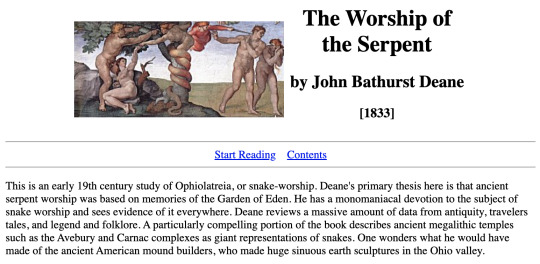

this kind of thing is why the deep-dives are my favorite kind of nightmare to subject myself to
So it's hard to say if a myth of a conflict between gods reflects a real-world conflict between religious practices, but all that said, that is a very interesting pattern to note - that Poseidon is more consistently a father of monsters, while Zeus is almost universally a father of heroes.
317 notes
·
View notes
Text
While this ranks relatively low on my overall list of complaints about STAR TREK: DISCOVERY and STRANGE NEW WORLDS, something I find annoying about them is that they've really built up the size and strength of Starfleet to something closer to what it is in STAR TREK: THE NEXT GENERATION, which contradicts TOS in ways that have far-reaching story effects.
TOS repeatedly indicates that in that period Starfleet has only a handful of ships in the Enterprise's class, presumably because they're resource-intensive to build and operate. As Kirk and John Christopher discuss in "Tomorrow Is Yesterday":
CHRISTOPHER: Must have taken quite a lot to build a ship like this. KIRK: There are only twelve like it in the fleet.
That plainly doesn't mean that Starfleet has no other ships, but ships of what TOS describes as the "Starship" class ("Constitution-class" is a later coinage) are uniquely capable. As Merik, former commander of the SS Beagle, explains in "Bread and Circuses":
MERIK: He commands not just a spaceship, Proconsul, but a starship. A very special vessel and crew. I tried for such a command.
This special status is a central part of the premise of TOS: It's the reason why the Enterprise is assigned such a diverse array of duties, and why what the Enterprise does is so important to the plot. Even into the TOS cast movie era, we're frequently told that the Enterprise is the only ship in the sector capable of responding to a problem or threat, and the crew is rarely in a position to call for reinforcements even where that would be tactically or strategically advisable.
While that makes duty on one of these ships very risky (as evidenced by the number of the Enterprise's sister ships that are lost with all hands in TOS, including Constellation, Defiant, and Exeter), as Merik's remark indicates, it's also a plum assignment, and one for which there's obviously fierce competition. The TOS bible makes much of the fact that Kirk is the youngest person ever to command one of these starships, and he also appears to be one of the lowest-ranking. (Many of the other starship captains we see are fleet captains or commodores, as well as being older than Kirk.) This comes into play at a variety of points: For instance, it's at the root of Ben Finney's animosity toward Kirk in "Court Martial" (and presumably why Kirk's peers are quick to give him the cold shoulder when he's charged with negligence in Finney's apparent death), and it's part of the tension in "The Doomsday Machine," where Kirk and Spock have to maneuver around the fact that Matt Decker outranks Kirk and is clearly the senior officer.
The limited number of starships also provides a useful Watsonian explanation for the dichotomy of a capital warship (which the Enterprise unequivocally is) being used for scientific research and exploration missions. Although TOS is reluctant to say much about civilian life within the Federation, we can probably assume that such costly starships are the subject of a lot of political wrangling, and the different roles the Enterprise plays probably reflect those tensions: The Enterprise's scientific duties may be a concession to those who (like David Marcus in STAR TREK II) are wary of Starfleet's military role, and perhaps an effort to extract a greater civilian return on the Federation's obviously substantial military investment. It might also be a diplomatic ploy, or an attempt to maneuver around arms control treaties with rival powers like the Klingons and Romulans. (Arms-limitation treaties are probably the most plausible explanation for the Enterprise-A being so hastily decommissioned and its entire class apparently being mothballed shortly after STAR TREK VI.)
DISCOVERY and STRANGE NEW WORLDS pay lip service to the specialness of ships of the Enterprise's class while undermining the point by indicating that Starfleet also has hundreds if not thousands of other, slightly smaller starships with 80 or 90 percent of the Enterprise's capabilities, carrying out a similar range of missions. I can see why they've gone that way, and there's obvious precedent for it in the TOS cast movies, which depict several other classes of Starfleet ships, but interposing that into the TOS era inevitably weakens the premise of the original stories, and renders many of the conceits of TOS unintelligible. (If it were up to me, I would attribute the expanded range of ships to changes between TOS and the era of the movies, which are set years later and have different narrative priorities.)
This retroactive Starfleet expansion also exacerbates the increasingly jingoistic militarism of modern STAR TREK, which is uncomfortably pronounced in both the Abrams films (which got money from the Pentagon for it) and in the recent shows (which I suspect are also getting DOD money, although I haven't seen that specifically confirmed). The large-scale fleet maneuvers of the finale of PICARD, for instance, are frankly terrifying, and would be even without the contrivances of the plot. A Federation that celebrates "Frontier Day" with a massive display of military power within the solar system, obviously aimed at awing and intimidating citizen and adversary alike, seems like a pretty harrowing "post-scarcity socialist utopia," even by the standards of a show that's always been about the crews of a spacegoing navy doing interstellar colonialism.
108 notes
·
View notes
Text
Countries that are no more: Achaemenid Empire (550BC-330BC)
It was not the first empire of Iranian peoples, but it arose as probably the greatest in terms of influence and became the measure by which all subsequent Iranian empires tended to compare themselves and its influence on culture, government & civil infrastructure would influence others beyond the span of its territory and the span of time. This is the Achaemenid Empire.
Name: In Old Persian it was known as Xšāça or the "The Kingdom or the Empire", it was named the Achaemenid Empire by later historians. Named after the ruling dynasty established by its founder Cyrus the Great who cited the name of his ancestor Haxāmaniš or Achaemenes in Greek as progenitor of the dynasty. It is sometimes also referred to as the First Persian Empire. The Greeks simply referred to it as Persia, the name which stuck for the geographic area of the Iranian plateau well into the modern era.
Language: Old Persian & Aramaic were the official languages. With Old Persian being an Iranian language that was the dynastic language of the Achaemenid ruling dynasty and the language of the Persians, an Iranian people who settled in what is now the southwestern Iranian plateau or southwest Iran circa 1,000 BC. Aramaic was a Semitic language that was the common and administrative language of the prior Neo-Assyrian & Neo-Babylonian Empires which centered in Mesopotamia or modern Iraq, Syria & Anatolian Turkey. After the Persian conquest of Babylon, the use of Aramaic remained the common tongue within the Mesopotamian regions of the empire, eventually becoming a lingua franca across the land. As the empire spread over a vast area and became increasingly multiethnic & multicultural, it absorbed many other languages among its subject peoples. These included the Semitic languages Akkadian, Phoenician & Hebrew. The Iranian language of Median among other regional Iranian languages (Sogdian, Bactrian etc). Various Anatolian languages, Elamite, Thracian & Greek among others.
Territory: 5.5 million kilometers squared or 2.1 million square miles at its peak circa 500BC. The Achaemenid Empire spanned from southern Europe in the Balkans (Greece, Bulgaria, European Turkey) & northwest Africa (Egypt, Libya & Sudan) in the west to its eastern stretches in the Indus Valley (Pakistan) to parts of Central Asia in the northeast. It was centered firstly in the Iranian Plateau (Iran) but also held capitals in Mesopotamia (Iraq). Territory was also found in parts of the Arabian Peninsula & the Caucausus Mountains.
Symbols & Mottos: The Shahbaz or Derafsh Shahbaz was used as the standard of Cyrus the Great, founder of the empire. It depicts a bird of prey, typically believed to be a falcon or hawk (occasionally an eagle) sometimes rendered gold against a red backdrop and depicts the bird holding two orbs in its talons and adorned with an orb likewise above its head. The symbolism was meant to depict the bird guiding the Iranian peoples to conquest and to showcase aggression & strength coupled with dignity. The imperial family often kept falcons for the pastime of falconry.
Religion: The ancient Iranian religion of Zoroastrianism served as the official religion of the empire. It was adopted among the Persian elite & and had its unique beliefs but also helped introduce the concept of free-will among its believers, an idea to influence Judaism, Christianity & Islam in later centuries. Despite this official religion, there was a tolerance for local practices within the subject regions of the empire. The ancient Mesopotamian religion in Babylon & Assyria, Judaism, the Ancient Greek & Egyptian religions & Vedic Hinduism in India was likewise tolerated as well. The tolerance of the Achaemenids was considered a relative hallmark of their dynasty from the start. Famously, in the Old Testament of the Bible it was said that it was Cyrus the Great who freed the Jews from their Babylonian captivity and allowed them to return to their homeland of Judea in modern Israel.
Currency: Gold & silver or bimetallic use of coins became standard within the empire. The gold coins were later referred to as daric and silver as siglos. The main monetary production changes came during the rule of Darius I (522BC-486BC). Originally, they had followed the Lydian practice out of Anatolia of producing coins with gold, but the practice was simplified & refined under the Achaemenids.
Population: The estimates vary ranging from a low end of 17 million to 35 million people on the upper end circa 500BC. The official numbers are hard to determine with certainty but are generally accepted in the tens of millions with the aforementioned 17-35 million being the most reasonable range based on available sources.
Government: The government of the Achaemenid Empire was a hereditary monarchy ruled by a king or shah or later referred to as the ShahanShah or King of Kings, this is roughly equivalent to later use of the term Emperor. Achaemenid rulers due the unprecedented size of their empire held a host of titles which varied overtime but included: King of Kings, Great King, King of Persia, King of Babylon, Pharaoh of Egypt, King of the World, King of the Universe or King of Countries. Cyrus the Great founded the dynasty with his conquest first of the Median Empire and subsequently the Neo-Babylonians and Lydians. He established four different capitals from which to rule: Pasargadae as his first in Persia (southwest central Iran), Ecbatana taken from the Medians in western Iran's Zagros Mountains. The other two capitals being Susa in southwest Iran near and Babylon in modern Iraq which was taken from the Neo-Babylonians. Later Persepolis was made a ceremonial capital too. The ShahanShah or King of Kings was also coupled with the concept of divine rule or the divinity of kings, a concept that was to prove influential in other territories for centuries to come.
While ultimate authority resided with the King of Kings and their bureaucracy could be at times fairly centralized. There was an expansive regional bureaucracy that had a degree of autonomy under the satrapy system. The satraps were the regional governors in service to the King of Kings. The Median Empire had satraps before the Persians but used local kings they conquered as client kings. The Persians did not allow this because of the divine reverence for their ShahanShah. Cyrus the Great established governors as non-royal viceroys on his behalf, though in practice they could rule like kings in all but name for their respective regions. Their administration was over their respective region which varied overtime from 26 to 36 under Darius I. Satraps collected taxes, acted as head over local leaders and bureaucracy, served as supreme judge in their region to settle disputes and criminal cases. They also had to protect the road & postal system established by the King of Kings from bandits and rebels. A council of Persians were sent to assist the satrap with administration, but locals (non-Persian) could likewise be admitted these councils. To ensure loyalty to the ShahanShah, royal secretaries & emissaries were sent as well to support & report back the condition of each satrapy. The so called "eye of the king" made annual inspections of the satrapy to ensure its good condition met the King of Kings' expectations.
Generals in chief were originally made separate to the satrap to divide the civil and military spheres of government & were responsible for military recruitment but in time if central authority from the ShahanShah waned, these could be fused into one with the satrap and general in chiefs becoming hereditary positions.
To convey messages across the widespread road system built within the empire, including the impressive 2,700 km Royal Road which spanned from Susa in Iran to Sardis in Western Anatolia, the angarium (Greek word) were an institution of royal messengers mounted on horseback to ride to the reaches of the empire conveying postage. They were exclusively loyal to the King of Kings. It is said a message could be reached to anywhere within the empire within 15 days to the empire's vast system of relay stations, passing message from rider to rider along its main roads.
Military: The military of the Achaemenids consisted of mostly land based forces: infantry & cavalry but did also eventually include a navy.
Its most famous unit was the 10,000-man strong Immortals. The Immortals were used as elite heavy infantry were ornately dressed. They were said to be constantly as 10,000 men because for any man killed, he was immediately replaced. Armed with shields, scale armor and with a variety of weapons from short spears to swords, daggers, slings, bows & arrows.
The sparabara were the first line of infantry armed with shields and spears. These served as the backbone of the army. Forming shield walls to defend the Persian archers. They were said to ably handle most opponents and could stop enemy arrows though their shields were vulnerable to enemy spears.
There was also the takabara light infantry and though is little known of them it seems they served as garrison troops and skirmishers akin to the Greek peltast of the age.
The cavalry consisted of four distinct groups: chariot driven archers used to shoot down and break up enemy formations, ideally on flat grounds. There was also the traditional horse mounted cavalry and also camel mounted cavalry, both served the traditional cavalry functions and fielded a mix of armor and weapons. Finally, there was the use of war elephants which were brought in from India on the empire's eastern reaches. These provided archers and a massive way to physically & psychologically break opposing forces.
The navy was utilized upon the empire's reaching the Mediterranean and engaged in both battles at sea and for troop transport to areas where troops needing deploying overseas, namely in Greece.
The ethnic composition of Achaemenid military was quite varied ranging from a Persian core with other Iranian peoples such as the Medians, Sogdian, Bactrians and Scythians joining at various times. Others including Anatolians, Assyrians, Babylonians, Anatolians, Indians, Arabs, Jews, Phoenicians, Thracians, Egyptians, Ethiopians, Libyans & Greeks among others.
Their opponents ranged from the various peoples they conquered starting with the Persian conquest of the Medians to the Neo-Babylonians, Lydians, Thracians, Greeks, Egyptians, Arabs & Indians and various others. A hallmark of the empire was to allow the local traditions of subjugated areas to persist so long as garrisons were maintained, taxes were collected, local forces provided levies to the military in times of war, and they did not rebel against the central authority.
Economy: Because of the efficient and extensive road system within the vast empire, trade flourished in a way not yet seen in the varied regions it encompassed. Tax districts were established with the satrapies and could be collected with relative efficiency. Commodities such as gold & jewels from India to the grains of the Nile River valley in Egypt & the dyes of the Phoenicians passed throughout the realm's reaches. Tariffs on trade & agricultural produce provided revenue for the state.
Lifespan: The empire was founded by Cyrus the Great circa 550BC with his eventual conquest of the Median & Lydian Empires. He started out as Cyrus II, King of Persia a client kingdom of the Median Empire. His reign starting in 559BC. Having overthrown and overtaken the Medians, he turned his attention Lydia and the rest of Anatolia (Asia Minor). He later attacked the Eastern Iranian peoples in Bactria, Sogdia and others. He also crossed the Hindu Kush mountains and attacked the Indus Valley getting tribute from various cities.
Cyrus then turned his attention to the west by dealing with the Neo-Babylonian Empire. Following his victory in 539BC at the Battle of Opis, the Persians conquered the Babylonia with relative quickness.
By the time of Cyrus's death his empire had the largest recorded in world history up to that point spanning from Anatolia to the Indus.
Cyrus was succeeded by his sons Cambyses II and Bardiya. Bardiya was replaced by his distant cousin Darius I also known as Darius the Great, whose lineage would constitute a number of the subsequent King of Kings.
Darius faced many rebellions which he put down in succession. His reign is marked by changes to the currency and the largest territorial expansion of the empire. An empire at its absolute zenith. He conquered large swaths of Egypt, the Indus Valley, European Scythia, Thrace & Greece. He also had exploration of the Indian Ocean from the Indus River to Suez Egypt undertaken.
The Greek kingdom of Macedon in the north reaches of the Hellenic world voluntarily became a vassal of Persia in order to avoid destruction. This would prove to be a fateful first contact with this polity that would in time unite the Greek-speaking world in the conquest of the Achaemenid Empire. However, at the time of Darius I's the reign, there were no early indications of this course of events as Macedon was considered even by other Greek states a relative backwater.
Nevertheless, the Battle of Marathon in 490BC halted the conquest of mainland Greece for a decade and showed a check on Persia's power in ways not yet seen. It is also regarded as preserving Classical Greek civilization and is celebrated to this day as an important in the annals of Western civilization more broadly given Classical Greece & in particular Athens's influence on western culture and values.
Xerxes I, son of Darius I vowed to conquer Greece and lead a subsequent invasion in 480BC-479BC. Xerxes originally saw the submission of northern Greece including Macedon but was delayed by the Greeks at the Battle of Thermopylae, most famously by Spartan King Leonidas and his small troop (the famed 300). Though the Persians won the battle it was regarded as a costly victory and one that inspired the Greeks to further resistance. Though Athens was sacked & burnt by the Persians, the subsequent victories on sea & land at Salamis & Plataea drove the Persians back from control over Greece. Though war would rage on until 449BC with the expulsion of the Persians from Europe by the Greeks.
However, the Greeks found themselves in a civil war between Athens & Sparta and Persia having resented the Athenian led coalition against their rule which had expelled them from Europe sought to indirectly weaken the Greeks by supporting Greek factions opposed to Athens through political & financial support.
Following this reversal of fortune abroad, the Achaemenid Empire not able to regain its foothold in Europe, turned inward and focused more on its cultural development. Zoroastrianism became the de-facto official religion of the empire. Additionally, architectural achievements and improvements in its many capitals were undertaken which displayed the empire's wealth. Artaxerxes II who reigned from 405BC-358BC had the longest reign of any Achaemenid ruler and it was characterized by relative peace and stability, though he contended with a number of rebellions including the Great Satraps Revolt of 366BC-360BC which took place in Anatolia and Armenia. Though he was successful in putting down the revolt. He also found himself at war with the Spartans and began to sponsor the Athenians and others against them, showcasing the ever dynamic and changing Greco-Persian relations of the time.
Partially for safety reasons, Persepolis was once again made the capital under Artaxerxes II. He helped expand the city and create many of its monuments.
Artaxerxes III feared the satraps could no longer be trusted in western Asia and ordered their armies disbanded. He faced a campaign against them which suffered some initial defeats before overcoming these rebellions, some leaders of which sought asylum in the Kingom of Macedon under its ruler Philip II (father of Alexander the Great).
Meanwhile, Egypt had effectively become independent from central Achaemenid rule and Artaxerxes III reinvaded in around 340BC-339BC. He faced stiff resistance at times but overcame the Egyptians and the last native Egyptian Pharaoh Nectanebo II was driven from power. From that time on ancient Egypt would be ruled by foreigners who held the title Pharaoh.
Artaxerxes III also faced rebellion from the Phoenicians and originally was ejected from the area of modern coastal Lebanon, Syria & Israel but came back with a large army subsequently reconquered the area including burning the Phoenician city of Sidon down which killed thousands.
Following Artaxerxes III's death his son succeeded him but a case of political intrigue & dynastic murder followed. Eventually Darius III a distant relation within the dynasty took the throne in 336BC hoping to give his reign an element of stability.
Meanwhile in Greece, due to the military reforms and innovations of Philip II, King of Macedon, the Greek speaking world was now unified under Macedon's hegemony. With Philip II holding the title of Hegemon of the Hellenic League, a relatively unified coalition of Greek kingdoms and city-states under Macedon premiership that formed to eventually invade Persia. However, Philip was murdered before his planned invasion of Asia Minor (the Achaemenid's westernmost territory) could commence. His son Alexander III (Alexander the Great) took his father's reforms and consolidated his hold over Greece before crossing over to Anatolia himself.
Darius III had just finished reconquering some rebelling vestiges of Egypt when Alexander army crossed over into Asia Minor circa 334BC. Over the course of 10 years Alexander's major project unfolded, the Macedonian conquest of the Persian Empire. He famously defeated Persians at Granicus, Issus and Gaugamela. The latter two battles against Darius III in person. He took the King of Kings family hostage but treated them well while Darius evacuated to the far eastern reaches of his empire to evade capture. He was subsequently killed by one of his relatives & satraps Bessus, whom Alexander eventually had killed. Bessus had declared himself King of Kings though this wasn't widely recognized and most historians regard Darius III, the last legitimate ShahanShah of Achaemenids.
Alexander had taken Babylon, Susa & Persepolis by 330BC and effectively himself was now ruler of the Persian Empire or at least its western half. In addition to being King of Macedon & Hegemon of the Hellenic League, he gained the titles King of Persia, Pharaoh of Egypt & Lord of Asia. Alexander would in time eventually subdue the eastern portions of the Achaemenid realm including parts of the Indus Valley before turning back to Persia and Babylon where he subsequently became ill and died in June 323BC at age 32. Alexander's intentions it appears were never to replace the Achaemenid government & cultural structure, in fact he planned to maintain and hybridize it with his native Greek culture. He was in fact an admirer of Cyrus the Great (even restoring his tomb after looting) & adopted many Persian customs and dress. He even allowed the Persians to practice their religion and had Persian and Greeks start to serve together in his army. Following his death and with no established successor meant the empire he established which essentially was the whole Achaemenid Empire's territory in addition to the Hellenic world fragmented into different areas run by his most trusted generals who established their own dynasties. The Asian territories from Anatolia to the Indus (including Iran and Mesopotamia) gave way to the Hellenic ruled Seleucid Empire while Egypt became the Hellenic ruled Ptolemaic Kingdom. The synthesis of Persian and Greek cultures continued in the Seleucid and Greco-Bactrian kingdoms of antiquity.
The Achaemenid Empire lasted for a little over two centuries (550BC-330BC) but it casted a long shadow over history. Its influence on Iran alone has persisted into the modern age with every subsequent Persian Empire claiming to be its rightful successor from the Parthian & Sasanian Empires of pre-Islamic Iran to the Safavids of the 16th-18th century and the usage of the title Shah until the last Shah's ejection from power in the 1979 Islamic Revolution. Even the modern Islamic Republic of Iran uses Achaemenid imagery in some military regiments and plays up its importance in tourism and museums as a source of pride to Persian (Farsi) & indeed Iranian heritage. Likewise, its form of governance and the pushing of the concept of divine rights of kings would transplant from its Greek conquerors into the rest of Europe along with various other institutions such as its road & mail system, tax collection & flourishing trade. Its mix of centralized & decentralized governance. Its religious & cultural tolerance of local regions even after their conquest would likewise serve as a template for other empires throughout history too. The Achaemenid Empire served as a template for vast international & transcontinental empires that would follow in its wake & surpass its size & scope of influence. However, it is worth studying for in its time, it was unprecedented, and its innovations so admired by the likes of Alexander the Great and others echo into the modern era.
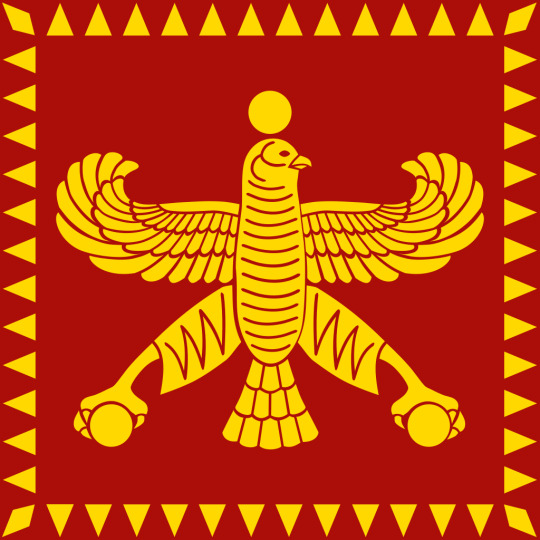
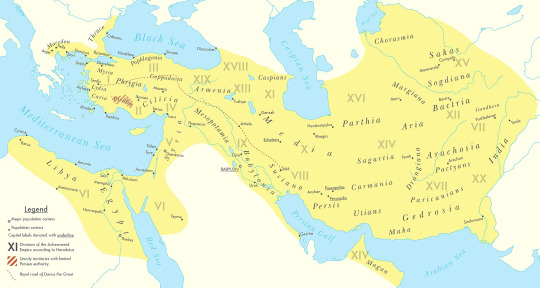

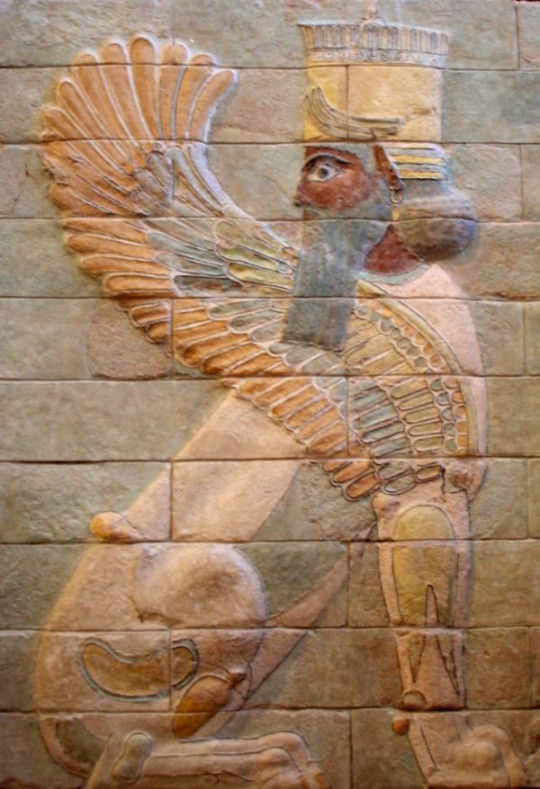


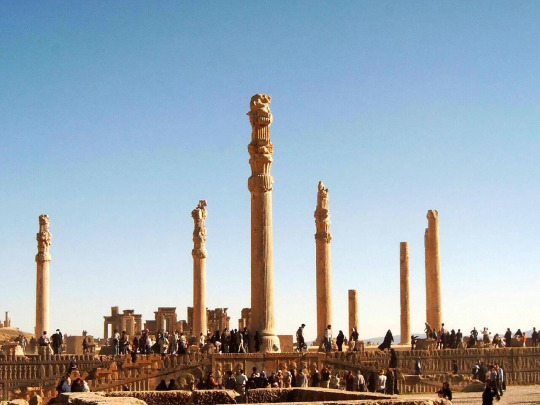
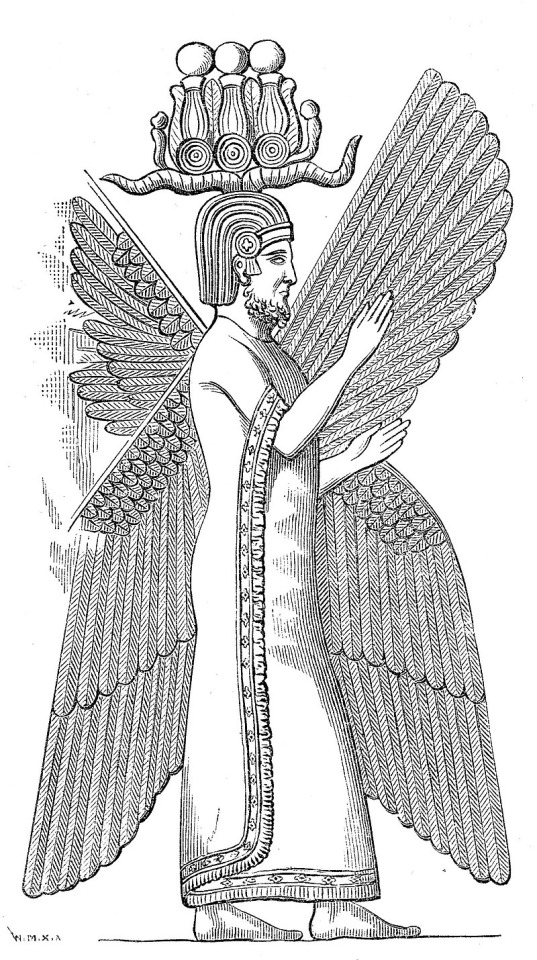
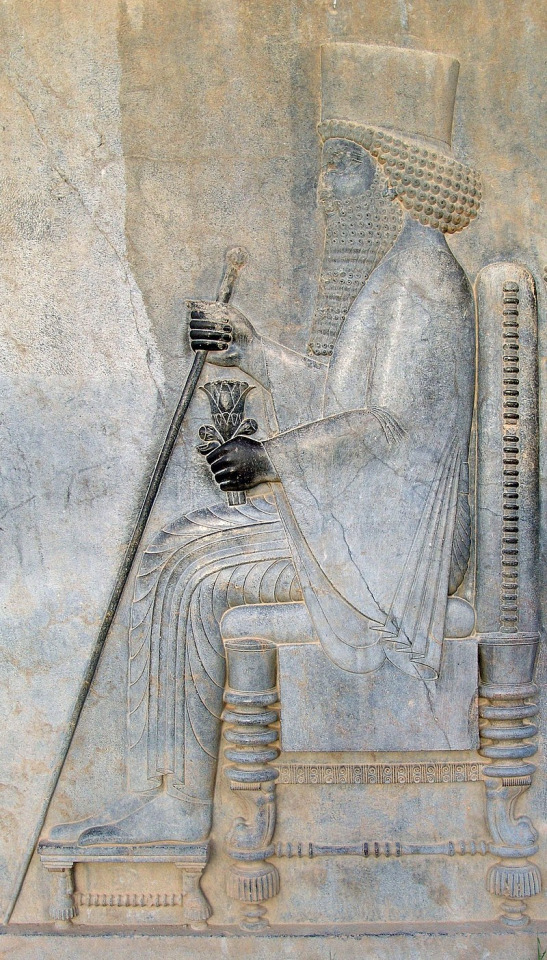


#military history#antiquity#iran#greece#ancient greece#classical greece#ancient ruins#ancient iran#ancient persia#achaemenid#persia#zoroastrianism#alexander the great#cyrus the great#xerxes#artwork#government#history#persian empire#ancient egypt
103 notes
·
View notes
Text

Handwoven Yemenite Jewish prayer shawl, Southern Yemen, Early 20th century. 275 x 102 cm. Gift of Yihya Ovadya Gibli, Jaffa.
"In Yemen, the biblical commandment (Num. 15:38–39; Deut. 22:12) to attach tassels (tzitzit) to the four corners of one’s garment is fulfilled by attaching tzitzit to the four-cornered outer garment worn daily; in other communities, where daily attire is not four-cornered, special ritual garments—the prayer shawl (tallit) and the vest-like tallit katan—have come to be used for this purpose.
The Jews of Yemen wore several types of four-cornered garments to fulfill the tzitzit precept. In Sana'a and on the Central Plateau, an everyday black woolen shawl worn over the shoulders served as a tallit. This type of shawl was an integral part of the Jewish male’s dress in the region, and the indicative offwhite ritual tassels hung from its four corners. A more precious version made of highly refined black wool was worn in this region on the Sabbath.
The garment’s Yemeni Arabic name shamleh recalls the Hebrew word simlah, used in the Bible. Both words carry the idea of a wrapped outer garment that envelops the wearer, as does the tallit when worn during prayers. As a four-cornered garment, the shamleh was subject to the commandment to bear tzitzit, and wearing it allowed one to fulfill the commandment with an article of clothing that served daily functions. In addition to being an article of clothing, it served as a blanket when resting, or a bag for bundling and carrying goods.
In rural Yemen, all men, Muslims and Jews, slung a striped, brightly colored cotton shoulder-cloth around their upper body called a lih feh or masnaf, edged with a woven band and fringes. On the four corners Jews added the ritual tassels, identifying themselves as Jews.
In southern Yemen, the tallitot were woven in color schemes of green, red, and yellow on an off-white background. These were the standard outer garment in this region, either rectangular in shape, or poncho-like with a hole or slit in the middle for the head, similar to the tallit katan (a small, four-cornered garment worn to enable one to fulfill the tzitzit commandment if one’s regular outer garment was not four-cornered). Silk squares were sewn on to reinforce the four corners where the tassels were fixed.
Skilled Jewish weavers made these garments. Among Yemeni Jews, weaving was a widely practiced and highly respected profession, one that was considered to require special skills. In the poncho-like tallit, the edges around the head and neck opening were embroidered with stitches typical of the area. At the turn of the twentieth century, the Ashkenazi white rectangular tallit with its blue or black stripes along the shorter, fringed hems, called shal in Yemen, frequently replaced the traditional Yemenite prayer shawls." x
#tallit#judaica#teimanim#yemenite jews#yemeni jews#mizrahi jews#textile art#jewish heritage#tzitzit#תימנים#מזרחים
13 notes
·
View notes
Text
So... on the subject of relative age in Delicious in Dungeon and Mithrun and fandom "jokes" I've seen folks complaining about. General manga and anime spoilers for character ages and names in the manga and anime below the read more:
On the one hand, I do get that people are (or at least were, I see it less these days) mad at the "Mithrun grandpa/old man" jokes/comments because "it's just cause he's disabled" and "relatively speaking, he's the same age as Chilchuck, and no one treats Chilchuck like he's an old man/something about how Chilchuck dislikes being treated differently, mentally, for his presumed age/state of mind".
Okay, yes. Relatively speaking, sure. There's a conversation to be had about the intersection of ableism and ageism and how we often baby (in a patronizing way) disabled people and the elderly, and how we prioritize youth and treat middle-aged people like their lives are over. (And maybe something about how he has silver hair, I don't know). On a more positive note, I love that, relatively speaking, possibly by Elvish standards, Mithrun is at/near middle-age (elvish age of maturity is 80 years, their average lifespan is 400 years), because that's a fascinating bit of world-building.
...On the other hand (please rest your pitchforks momentarily), Mithrun is literally 185 years old, he is the fifth oldest cast member for characters whose age we know as of the English release of the Delicious in Dungeon World Guide: The Adventurer's Bible (after the Elf Queen, who's 372, the elder Flokes, who are in their 200s, and Milsiril, who's four years older than Mithrun), and he is the oldest member of his group of the Canaries (he's literally 103 years older than his subordinate, Pattadol, and still 39 years older than Cithis, the next oldest Canary after Mithrun). And speaking of Chilchuck, who is, yes, a married father of multiple adult children... and also 29. Mithrun has lived over six times as long as Chilchuck has. (All ages come from Delicious in Dungeon World Guide: The Adventurer's Bible; Sissel + the other Golden Country residents don't have listed ages there, though they're at least 1000 years old, and the other elves don't show up). Mithrun was in recovery after the central watchtower dungeon for longer than at least five characters have been alive.
Age chart:
Elf Queen: 372
Tansu Floke: 210
Yarn Floke: 204
Milsiril: 189
Mithrun: 185
Cithis: 149
Otta: 137
Fleki: 130
Lycion: 126
Senshi: 112
Noor: 98
Totan: 95
Pattadol: 82
Gillin: 79
Brigan: 78
Holm: 76
Fionil: 62
Namari: 61
Daya, Invar: 58
Marcille: 50
Maizuru: 41
Chilchuk: 29
Laios, Toshiro, Hien: 26
Rin: 24
Falin, Benichidori: 23
Kabru, Mikbell: 22
Zon: 21
Kaka, Kiki: 20
Kuro, Doni: 18
Izutsumi, Inutade: 17
Leed: 14
Mithrun is older than Senshi, older than Marcille, older than Kabru's entire party, including Holm and Daya, and older than the oldest human we have an established age for, Maizuru (again, the first Adventurer's Bible doesn't list the Golden Country resident ages, and Mithrun is definitely younger than them, but also they're generally minor characters except for Yaad and Delgal). He's older than Senshi's former dwarf comrades were when they died. He's also apparently older than Flamela, the vice commander of the Canaries (she's 170, at least according to the fanwiki, which is possibly going off the Complete Adventurer's Bible).
He is of course younger than Obrin, his older brother, whose age we don't know, but we do know that Mithrun is the younger brother. He is also obviously much younger than the demon.
I also find it interesting that people are jumping to the big assumption that he's middle-aged (relatively) due to... I guess just chopping the average lifespan of elves in half and assuming that's what they think middle-aged is? We know the average lifespan of elves and when they come to maturity. We do not know what elves think of Mithrun's age or what their concept of being middle-aged is, if they have one. He could be considered young by elf standards. He could be considered old. We have no idea.
Thinking about the conversation in Volume 8, Chapter 51: Dumplings 2, it's just about total/average lifespan and how near the characters are to dying by average race age, not middle age.
Chilchuck on p.37: "What's the difference between our actual ages and how old we look?"
Laios: "Well, dwarfs do live two and a half times as long as tall-men."
Chilchuck: "If our actual ages affect our looks, then... ...I'm curious about remaining life. Will we age at the same rate we did before? Or will it match our bodies now?"
They never get an answer for this. We do get rough estimates for what one race's age means to another by comparing Laios' actual age (26) to what Senshi thinks dwarf!Laios is, age-wise (his 60s), and both ages put him near but not at assumed middle-age for the respective race (for tall-men it would be 30, for dwarfs, 100), but otherwise they don't come to many conclusions about anything. They just guess and try to change back before something worse happens. Marcille doesn't even say anything in this conversation about elf culture. She just panics because half-foots live shorter lives.
I would not personally call Mithrun a grandpa and I don't particularly connect with jokes about it. By Elvish standards, and relatively speaking, he is perhaps not, arguably, old. ...But he's no spring chicken, either, despite how strong and fast he is. By the standards of most characters he is interacting with in the story, he is the oldest person in the room, by a substantial margin (heck, the age gap between Mithrun and Cithis is more years than Chilchuck has lived). That doesn't make him a grandpa, either. But I do find people getting mad about folks pointing out this literally 185-year-old being is you know... 185 years old... odd...? Especially when he's around all these by and large substantially younger people (younger people who are adults by and large!!!) for most of the story. Again, there's definitely a conversation to be had about the intersection of ageism and ableism, and how we treat people who are middle-aged as if they're elderly even when they're able-bodied, and about the way other characters in-universe treat him (though the one time I think his age is pointed out, it's about the stuff he knows, not to mock him for it; mostly people treat him badly due to his disabilities (e.g., Fleki with his aiming in chapter 55, Cithis in the Adventurer's Bible), not because of his age)... but it does feel very much like people are ignoring that he is honestly one of the oldest characters in the story, and not by dint of being the oldest youth, but because he's a character who has lived to be nearly 200 years old.
#mithrun#delicious in dungeon#dungeon meshi#dungeon meshi spoilers#I think there's also a conversation to be had about how Flamela talks down to him#I'm not saying grandpa joke away but people ignoring that he's literally 185 years old is kind of weird to me#he's actually not exactly middle-aged#he's slightly younger than that#he is by some definitions young#but remind me when we decided people nearly 200 years old weren't by some definitions old#I think there's interesting things to explore in a character who's lived to be that old#interacting with more races who don't get to live that long but who have different experiences#than pretending he's got roughly the same amount of lived experience as someone who's lived 6x less than he has#like he was in recovery nearly as long as Kabru is alive and none of his caretakers knew to try a foot massage?#not a single one of them?#no wonder it was only Milsiril showing up that led to him having a breakthrough#kui's manga is among other things about how different races experience things differently#and take away different lessons and understandings#and have different values#and navigating those differences can be hard but is worthwhile#like with senshi and the dwarves or idk every single mixed race party#what I find fascinating about the changeling age scene is how Chilchuck DOESN'T say everyone is the same with relative age#he notes the different ways races experience aging#races in dunmeshi have different biology#and this is a core part of Marcille's character arc#she is literally terrified of her loves ones dying and hates the unfairness of different race aging processes#one thing that's important to kabru's arc and the story in general is how knowledge can be lost and hidden#especially by older races who hoard it#and how this can be abused so easily whether it's the elves or the demon#and we learn a little over midway through the story that dungeon lords can be cured or rescued because Mithrun was one and he got away
12 notes
·
View notes
Text
Judd Legum at Popular Information:
On Tuesday, the South Carolina State Board of Education will impose a centralized and expansive censorship regime on every K-12 school library in the state. The new regulations could result in the banning of most classic works of literature from South Carolina schools — from The Canterbury Tales to Romeo and Juliet to Dracula. The rules were championed by South Carolina State Superintendent of Education Ellen Weaver, who is closely aligned with Moms for Liberty, a far-right advocacy group seeking to remove scores of books from school libraries.
The regulations restricting library books, which were first proposed by the State Board of Education in September 2023, would ban any instructional materials, including library books, that are not "Age and Developmentally Appropriate." The term "Age and Developmentally Appropriate" is defined as "topics, messages, materials, and teaching methods suitable to particular ages or age groups of children and adolescents, based on developing cognitive, emotional, and behavioral capacity typical for the age or age group." This definition is so broad and subjective that it could justify the removal of virtually any material.
Further, any library books (or other instructional materials) are automatically deemed "not 'Age and Developmentally Appropriate' for any age or age group of children if it includes descriptions or visual depictions of 'sexual conduct,' as that term is defined by Section 16-15-305(C)(1)." Critically, the regulations ban library books with any descriptions of "sexual conduct" whether or not those descriptions would be considered "obscene." Under the South Carolina law, a library book is not considered obscene if it includes descriptions of "sexual conduct" if it has "serious literary, artistic, political, or scientific value" or if the book, taken as a whole, does not appeal to a "prurient interest in sex." This means that classic texts that contain descriptions of sexual content, including The Bible and Ulysses, are not considered obscene.
The new South Carolina regulation refers only to Section 16-15-305(C)(1), which defines "sexual conduct" as "vaginal, anal, or oral intercourse, whether actual or simulated, normal or perverted," "masturbation," or "an act or condition that depicts actual or simulated touching, caressing, or fondling of, or other similar physical contact with, the covered or exposed genitals." Starting tomorrow, any book that contains any descriptions of "sexual conduct" that meets that sweeping definition is required to be banned from South Carolina schools, regardless of whether it has literary merit or would be considered obscene.
Similar language in an Iowa law "resulted in mass book bans affecting classics, 20th-century masterpieces, books used in AP courses, and contemporary Young Adult novels."
The enforcement of the new regulation is highly centralized. Any South Carolina parent with a child enrolled in a public K-12 school can challenge up to five books per month on the grounds that they contain descriptions of sexual content or are otherwise not age-appropriate. The school district board is then required to hold a public meeting within 90 days to consider the complaint. At the meeting, the school district board is required to announce whether or not it will remove the book. If the school district board decides not to remove the book, the parent can appeal to the South Carolina State Board of Education. After the State Board receives the appeal, it must publicly consider it no later than the second public meeting. If the State Board decides that the book should be removed, that decision is binding not only on the school district where the complaint originated by all K-12 schools in South Carolina. Any school employee who fails to comply with the bans will be subject to discipline by the State Board. The State Board is empowered to impose any punishment, including termination, that it deems appropriate.
[...]
Moms for Liberty's influence in South Carolina
Weaver is a close ally of Moms for Liberty, which has advocated across the country to remove books from school libraries. She appeared at the Moms for Liberty 2023 Joyful Warriors National Summit. "There is nothing more precious that God has created than the hearts and the minds of our young people," Weaver said. "And that is what the radical woke left is after. Make no mistake: saving our country starts with saving our schools."
South Carolina is set to impose a draconian and reckless book ban policy across every school library in the state.
This insanity is the handiwork of far-right Moms For Liberty-aligned extremist Superintendent of Education Ellen Weaver.
#South Carolina#School Libraries#Book Bans#Book Banning#Censorship#Education#Schools#South Carolina State Board of Education#Prurient Interest#Ellen Weaver#Moms For Liberty
8 notes
·
View notes
Note
sir you must tell me everything about adamellie at your earliest convenience.
as well as perhaps a visual depiction via art or picrew???
goobnight

okay so here is a picrew of her i made bc i have art block (it's not perfect like i think her hair is curlier than this, and i'm still unsure on certain details or her clothes, but Close Enough)
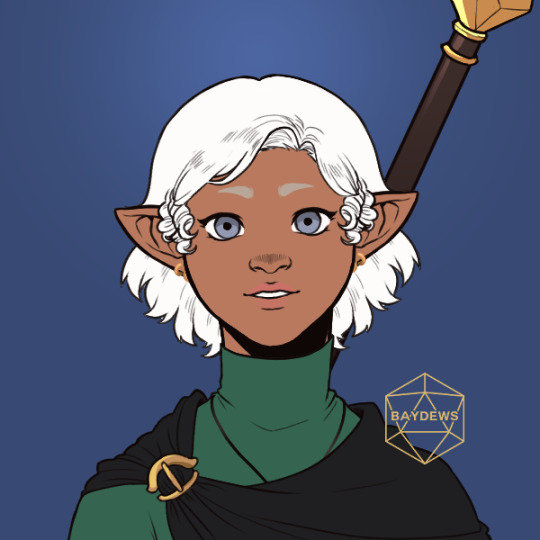
and here's an adventurer's bible style character sheet:
full name: adamellie of the house of wynd
age: 47
race/gender: half elf, half half-foot / female
birthplace: the southern central continent
relatives: father, mother (likely deceased), step-mother, half-sister
build: 120 cm, 22 bmi
likes: custard, oysters
dislikes: anything with a visible face (i.e. fish heads)
first death: treasure insects
(though some of this may be subject to change, especially her age. half-elves tend to mature at unpredictable rates and idk what maturity timeline i like best for her. maturity-wise she's in her early 20s, though. like, she is definitely an adult but her prefrontal cortex isn't quite done cooking yet)
okay so adamellie's existence kinda came from three main different thoughts
1: the corpse collectors/revival office are fascinating, i wonder what other kinds of financial exploitation can occur in the dungeon, like "pay for my services or you will literally die without them" situations
2: teleportation magic is interesting, especially those scrolls like mr tansu used. i wonder how someone could take advantage of those sorts of mechanics in a story that is so much about traversing a physical space
3: we see half-elves that are half-tallman. and the adventurer's bible mentions that tallmen can have fertile offspring with ogres or half-foots, as can gnomes with dwarves. i wonder what other combinations could exist
so adamellie's thing is like. so teleportation scrolls work like this, right?

well she basically saw the "this technique shouldn't be used unless absolutely necessary" and was like "hm yeah but what if i did anyway?" (it's risky and dubiously legal but that ain't stopping her)
she's got a few storerooms on the surface that she packs absolutely full of adventuring supplies. mostly food and drinks and medicine and mana herbs, but a couple spare bedrolls and clothes and weapons and whatnot as well.
she's got a teleportation scroll hooked up to each of her storerooms, and when she needs something, she just unfurls one of her scrolls, reaches in, and pulls whatever she needs out from her storeroom. it's not quite a bag of holding, but it's pretty damn close
it's a pretty unstable technique, but miraculously she's managed to not die or lose any limbs from this method yet, so she sees no reason to change it. the main mishaps she's encountered thus far are
1: on occasion, the scroll she carries with her randomly loses connection with the storeroom it's linked to, meaning she loses access to about a quarter of her inventory. sometimes she's able to reopen it, but doing so is very costly in terms of time and mana, so she typically just counts it as a loss for this trip. this has happened many times
2: a few times, she's gone through the scroll, either to escape a dangerous situation or to try and grab something from deep in the storeroom, and the portal closed behind her. this meant she was forced to exit through the storeroom's actual door and return to the surface many weeks before she had planned
3: she found a corpse on a lower floor while she was out of mana, so she put it in one of her storerooms for safekeeping until she could recover her mana and revive him. the scroll failed while the body was in there, meaning the corpse was no longer part of the dungeon and was just in some random storage closet on the surface, so the guy was unrevivable. oopsie daisies! (she only made this mistake once but it was a real mess)
4: thieves on the surface broke into a couple of her storerooms, breaking the spell (and stealing her stuff). she's been very careful to avoid this since then, using very strong locks on the physical doors of the storerooms.
despite the risks though, this is a pretty effective strategy in a dungeon where one of the biggest obstacles is your access to supplies. so what is she doing with it? is she an invaluable asset to some party hoping to defeat the mad mage? nah.
she's not sure she believes in the golden kingdom prophesy (and she thinks other monetary ventures like gold stripping, monster-culling, and selling research are all oversaturated markets). and she thinks that a party would just slow her down and attract unnecessary monster attention (and take a cut of her profits) anyway. she's just in the game to make a quick buck with her unique strategy.
she is a merchant, selling wares from her storerooms to desperate adventurers on lower floors, for absolutely exorbitant prices. it's not like they're in any position to haggle food prices when they're starving, after all. (she also does occasional healing or resurrection magic when she finds someone injured or dead, demanding high fees afterwards. if they refuse to pay, she says "okay, then do you want me to undo what i just did and injure/kill you again?" (she is absolutely bluffing. she sucks shit at fighting.) and if someone cannot afford to pay her in the moment, she makes them sign a contract that they'll repay her later, and puts a tracking charm on them)
she plays it fast and loose in the dungeon, traveling alone and spending a lot of time in lower floors. she uses her stealth skills, supplemented with magic, to sneak past monsters. when she's in a really dangeous situation (whether because a monster noticed her, or because an adventurer got Really Mad at her) she'll hop through one of her scrolls to the safety of her storerooms.
every couple months (or more, often if/when her scrolls fail) she returns to the surface to restock her storerooms and reset/repair/replace her teleportation scrolls. then, once that's done, she returns to the dungeon, trying to reach the lower floors again as quickly as possible.
she calls herself heroic, bringing food to the starving and reviving people at levels that most corpse retrievers often avoid. adventurers have mixed feelings on her. on one hand, running into her when you're in need can be a literal life saver. on the other hand, she is exploiting people while they're at their lowest
i will tell more about her and her backstory and family later bc it is A Doozy and this post is already insanely long lol (update: backstory has been added via reblog)
18 notes
·
View notes
Video
youtube
Why does James emphasize the fleeting nature of life in James 4:14
"The Vapor of Life: Embracing Humility and Trusting God’s Plan"
In James 4:14, the Bible offers a poignant and humbling reflection on the nature of human life: “For what is your life? It is even a vapour, that appeareth for a little time, and then vanisheth away.” This verse forces us to confront the reality of life’s brevity and the illusion of control that we often cling to. As we explore the meaning behind James 4:14, we are reminded to live with humility, surrendering our plans and desires to God, and trusting Him to guide us in all things.
The Vapor of Life
James’ comparison of life to a vapor is both poetic and striking. Like mist that appears briefly before vanishing, our lives are short and fleeting. This truth is echoed throughout Scripture. Psalm 144:4 declares, “Man is like to vanity: his days are as a shadow that passeth away.” Job 14:1-2 adds, “Man that is born of a woman is of few days, and full of trouble. He cometh forth like a flower, and is cut down.” Together, these verses emphasize the frailty of human existence and the need to live with an awareness of our mortality.
In a society that values long-term success, security, and material gain, this truth can be unsettling. We tend to live as though tomorrow is guaranteed, forgetting that life is fragile and subject to God’s will. James 4:13-15 cautions us against boasting about future plans: “Whereas ye know not what shall be on the morrow.” This reminder serves as a call to humility.

Embracing Humility
Humility is central to the message of James 4:14. The acknowledgment that our lives are but a vapor should lead us to a posture of humility before God. We are not in control of our own destinies; rather, our future is held in God’s hands. Proverbs 27:1 warns, “Boast not thyself of to morrow; for thou knowest not what a day may bring forth.” Humility teaches us to let go of the illusion of control and trust in God’s sovereignty.
To live with humility is to recognize our dependence on God in every aspect of life. It is to submit our plans, desires, and ambitions to His will, knowing that His understanding is far greater than ours. This humility doesn’t diminish our value or purpose; instead, it enhances it by allowing us to walk in alignment with God’s perfect plan for our lives.
Trusting God’s Plan
James 4:14 also calls us to trust God with our future. When we recognize that life is short and unpredictable, it’s easy to become anxious or fearful about what lies ahead. But as believers, we are invited to place our trust in the One who holds all things together. Jeremiah 29:11 reassures us: “For I know the thoughts that I think toward you, saith the Lord, thoughts of peace, and not of evil, to give you an expected end.”
Trusting God’s plan requires faith. It means letting go of our need for control and trusting that God’s ways are higher than ours (Isaiah 55:8-9). This trust is not passive; it involves actively seeking God’s will through prayer, reading Scripture, and being sensitive to the leading of the Holy Spirit. As we submit to God’s guidance, we can rest in the assurance that He is working all things together for our good (Romans 8:28).
Conclusion
James 4:14 offers a powerful reminder of life’s brevity and the need for humility and trust in God’s plan. By recognizing that our lives are like a vapor, we are invited to live with humility, acknowledging our dependence on God in all things. As we trust in His sovereignty, we can find peace in knowing that our future is secure in His hands.
#James414 #LifeIsAVapor #TrustGodsPlan #FaithAndHumility #ChristianLiving #DependOnGod #BiblicalWisdom
3 notes
·
View notes
Text

THE SIGNIFICANCE OF ISRAEL IN THE CHRISTIAN CIRCLE
In the Christian circle, the significance of Israel is a topic of theological and spiritual importance, often rooted in biblical references and interpretations. The Biblical View of Israel:
The Bible holds a central place in shaping the Christian perspective on Israel. It is considered a Jewish book, and Jesus, the Savior, is of Jewish descent. The nation of Israel, despite its current secular and unbelieving state, is seen as having a remnant chosen by grace, with some Jews being saved and becoming members of the body of Christ through faith in their Messiah (Romans 11:5).
1. The Abrahamic Covenant:
The Abrahamic Covenant is often cited as a reason for Christians to support the nation of Israel. It is believed that Christians are forever linked with the spiritual promises of God through their faith in the Redeemer who came through the Jews (Romans 2:28–29, Galatians 3:26–29).
2. God's Chosen People:
The biblical perspective emphasizes that Jews are the chosen people of God and are dearly loved by Him. This love and plan for His chosen people are seen as a significant aspect of God's relationship with Israel (John 3:16).
3. Support and prayers:
Christians are encouraged to stand with Israel and pray for the peace of Jerusalem (Psalm 122:6). The belief in the continuity of God's covenant relationship with Israel leads to the support of Israel by default, including its right to the land.
4. Relationship between Israel and the Church:
The relationship between Israel and the church is a subject of theological debate. Some traditional views maintain that God has not replaced Israel with the church but has distinct programs for both, while others see continuity between true Israel and the church, with the church being the true Israel.
5. In summary:
The significance of Israel in the Christian circle is deeply rooted in Biblical references, Theological interpretations, and Faith in God's ongoing relationship with His chosen people
Pastor John U. Ordillo
5 notes
·
View notes
Note
Hey Nunya can you explain the difference differences between Yiddish and Hebrew? Is Hebrew is to Yiddish what Italian is to Latin?
Sorry, ugh why we know so little about Jewish history? It’s like it just went from ancient history to the holocaust like in one paragraph
Wait, probably because the left don’t want to admit that the Nazis had a “Eat the Rich” mindset towards the Jews. And have you notice a lot of European countries pretend they didn’t have centuries of antisemitism leading up to the holocaust?
Given the current situation with Israel and Palestine…yeah.
Yiddish is a weird combo language it's going to be indigenous to Ashkenazi Jews came to being in central Europe as a mix of Hebrew, German, some Polish, and other local languages at some point 1000 or so years ago and has refined itself over the centuries before almost being wiped out along with Jewish population of Europe in the 1940's with the Holocaust. Makin a come back though which is good.
There's a lot of high quality snarky insults in there too, there's a good wikipedia article that's going to be way more detailed and informative than I could be on the subject, not just the insults either.
I gave it a skim to make sure I wasn't giving bad info. Says it's High Germanic which that's a lot of languages in the family tree
As for their history, there's a lot they don't know either, starting with the northern kingdom of Samaria being scattered by the Babylonians, 10 lost tribes and all, there were still Samaritans after that whole thing obviously, kingdom of Judea not big fans of them as you may remember from some stories in the Jesus part of the bible. There's still a few there too, dwindling population of them in Israel.
They've been looking and trying to bring people home if they'd like to come home and their current home country will allow it too, one group that tickles me every time I think about them is the Kaifeng Jews random community in China that popped up in the records here and there, couple others in China as well. Ethiopian royal family which is not really around anymore claims descent from Solomon and the Queen of Sheba, there are Ethiopian Jews living in Israel some racism accusations that may carry water there I haven't dug.
A lot of their history for the ones that landed in Europe is fairly parallel to everyone else's history there other than the whole Pope thing, and the various pogroms where the local Christian community to our eternal shame tried to go in and wipe them out for a multitude of reasons mostly false and related to superstition and or ignorance. Check out the places that got hit by the plague the least and you'll see why ritual washing is a good thing.
Then there was that whole inquisition thing and England actually banned them from living there completely for a while, that mildly recent in the grand scheme of history.
Short short short version of Jewish history can be summed up with the traditional toast "they tried to kill us, we survived, let's eat" which is both sad and hilarious all at the same time.
The history is there though, it's just not something you're going to pick up a lot of in primary (k-12) school, same reason as a lot of things that get a glossed over treatment, there's a whole lot of it.
People are lucky the internet is a thing now, not only can you find a whole bunch of pictures of raccoons wearing different hats and outfits, the whole world of information is at our fingertips and anything we're interested in, provided it's not a national security threat, is there to be learned about.
7 notes
·
View notes
Text
Obscure Animation Subject #39: Lucy, the Daughter of the Devil
Originally posted on Twitter on March 18, 2023.
A computer animated series aimed at adults created, written and directed by Loren Bouchard, whose also the creator Home Movies (with Brendon Small), Bob's Burgers and Central Park (with Josh Gad and Nora Smith).
The show is a collaboration between Loren Bouchard, LLC (now Wilo Productions), Fluid Animation and Williams Street, and aired on Cartoon Network via the Adult Swim programming block from September 9 to November 11, 2007. A pilot did air on October 30, 2005 though.
The predecessor of Little Demon, the show follows the titular 21-year-old Lucy, who lives in San Francisco and has been ordained by her father, the devil, to fulfill her destiny as the Antichrist, whether she likes it or not.
Along the way she meets up with a DJ named Jesús, who turns out to be the Second Coming of the messiah and the two begin dating from the first episode. Meanwhile, her father tries different schemes in his quest to take over the world with the help of his "advocate," Becky.
At the same time a group of "Special Clergy," two priests and a nun, are on a mission from the Vatican to find and destroy Lucy. Sounds pretty bizarre, and yet done well thanks to the subversion the show uses in its universe, having the god is good and devil is bad trope flipped.
This show has lots of shock value and offensive material, but it is executed well like another show similar to this, Moral Orel. This show has false social commentary, and by that I mean the commentary is obviously wrong, but it's meant to be taken that way and be funny.
It's weird to describe that but trust me its solid. Animation isn't good but the characters and story direction are nice. Sometimes the edgy humor can be too much and not all the stories are clean, but still an enjoyable show. Its flawed and not perfect, but its worth watching.
Definitely recommend it if you handle shock humor and twist some storylines in the Bible, it’s unique with its animation (although subpar), humor and subversion. Loren Bouchard is quite an animation master giving us great show after great show. Wonder how its successor is doing…

3 notes
·
View notes
Text
Thoughts on the recent school shooting in Tennessee:
I can't help but identify with the school- it's a small K-8 private Christian school in a wealthy Midwestern suburb, associated with a mainline Protestant denomination. That's where I went for my K-8 schooling, even though it was a different school. We trained for school shootings, and I saw that any shooter could look through a window to see where we 6 year olds huddled by the teacher's desk, trying to stay still and quiet. They could shoot into us rapid-fire, barely move the gun, and bury the central children under a pile of bodies. The teacher was endangering herself by going to lock the door (it only locked from the outside), but she told us that was her job, to protect us, and not send one of us to do it (I was 7, she was in her 60s, and I don't know what she thought of the children offering to die for each other).
We memorized Bible passages there, and had flannelgraphs of Martin Luther nailing his 95 Theses to the church door on Reformation Day, not Halloween. Bible class was the fifth core subject, besides English, Social Studies, Science, and Math. We had art classes, Spanish classes, computer classes, music classes, and gym with a teacher out of an 80s comedy. We learned about the weather and Young Earth Creationism, the Care and Keeping of You and abstinence only. I was depressed and queer (though I didn't know it) and smart and loved the playground that was built like a castle. One of my good friends there was bullied terribly, because he was autistic and a trans man and didn't play woman well and middle school boys can be terrible. I think I was bullied too, but it mostly slid off; I was too wrapped up in my own head to notice.
Today's shooter is a trans woman and an alumna of the school, my age. Who knows what brought her to kill teachers and children; I can easily believe she was bullied there too, but a decent human's reaction is simply to leave it alone, not to go back and kill. If she had been a cis man, if this had been a public school, this would just be another tragedy, and that is a horrible sentence to write. But she is a trans woman, and the school is a Christian school, and... the Right can have a field day with this. She can be turned into a demonic representation of the Left's War on Christianity, a subhuman avatar of Why Trans People Shouldn't Exist, another iteration of Why Trans Women Are Just Men Actually, and I fear for what this will mean for my trans siblings. Tennessee already has a drag show ban in place; this could be the spark kindling worse.
Edit: apparently the shooter is a trans man, not a trans woman. I seem to have given too much credit to the news. Feelings still stand, minus what the TERFs will say.
#tw for gun violence#and general fear and nastiness#tennessee school shooting#christianity#trans people#and what the GOP will do with this
7 notes
·
View notes